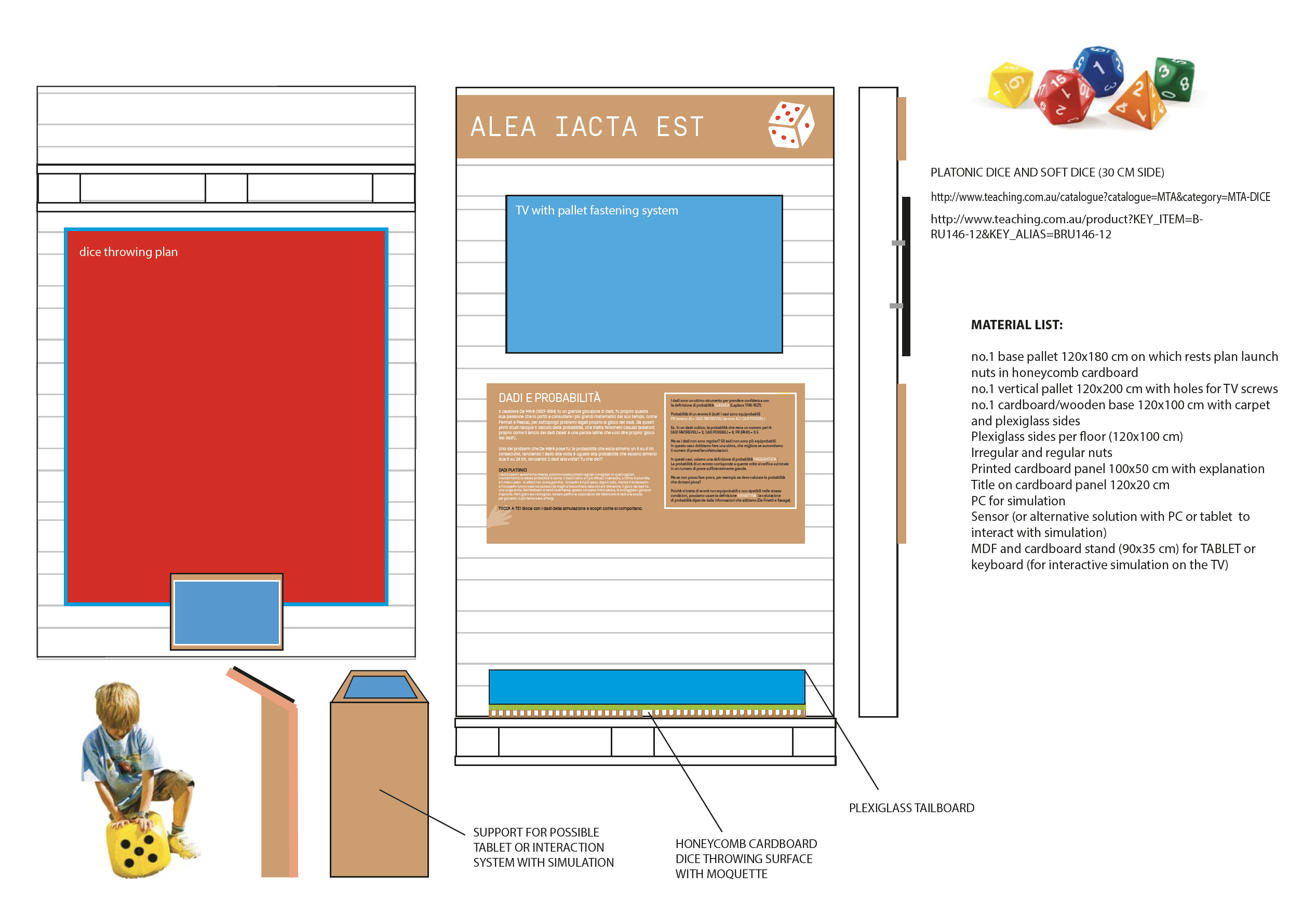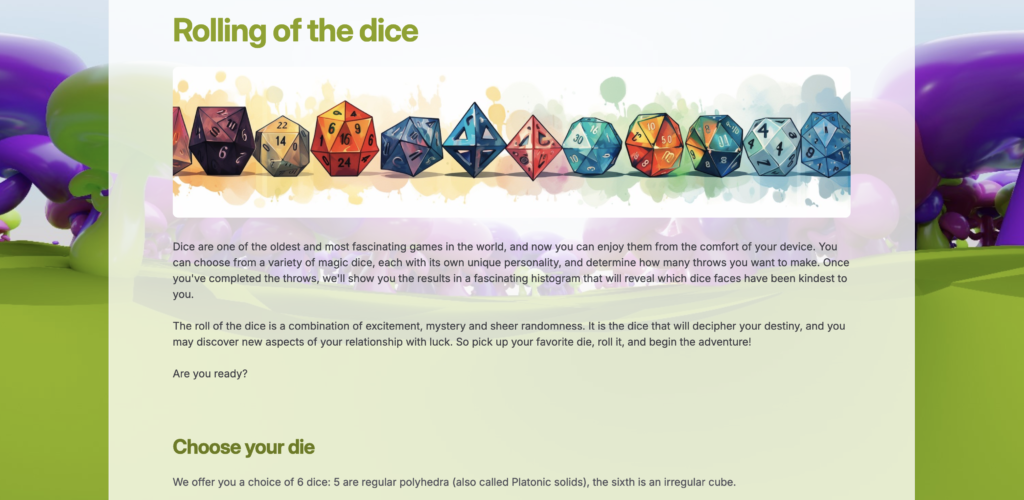To say “the die is cast” (in latin “Alea iacta est”) is to suggest that a process is past the point of return. A die is a numbered cube used in gaming (the singular of dice). Actually, dice can have different shapes, they can be regular or irregular polyhedra, so, most in general, the dice is a polyhedral shaped object used for various games whose marked faces are used to randomly generate numerical or other outcomes. In a regular die, all numbers have the same probability of coming out. The cubic die is the most common, the tetrahedron, shaped like a pyramid, is the least used, the octahedron is the most used after the cube, while the dodecahedron (12 faces) and the icosahedron (20 faces) were used in the past by magicians and sorceresses in their divinatory arts.

How to play
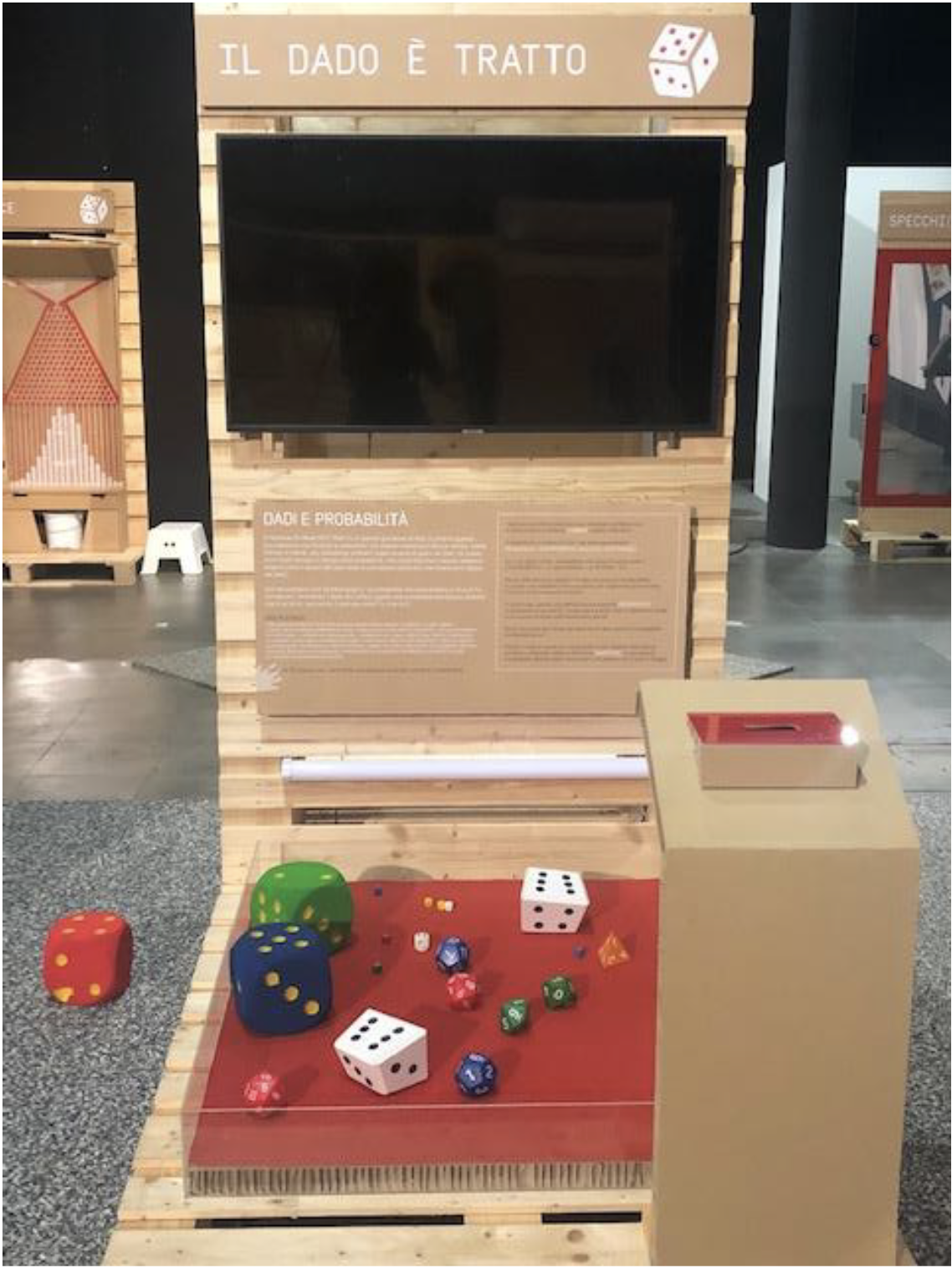
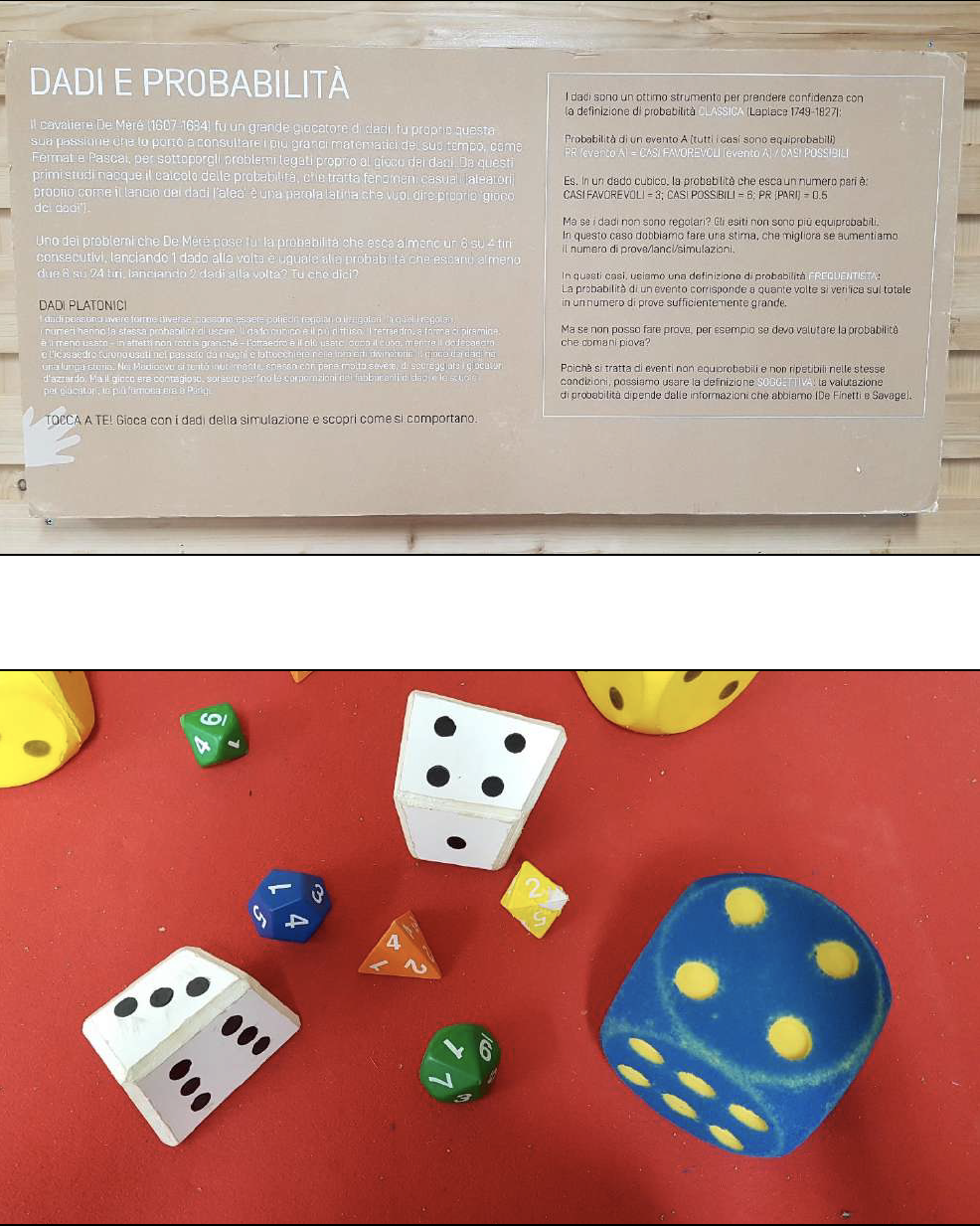
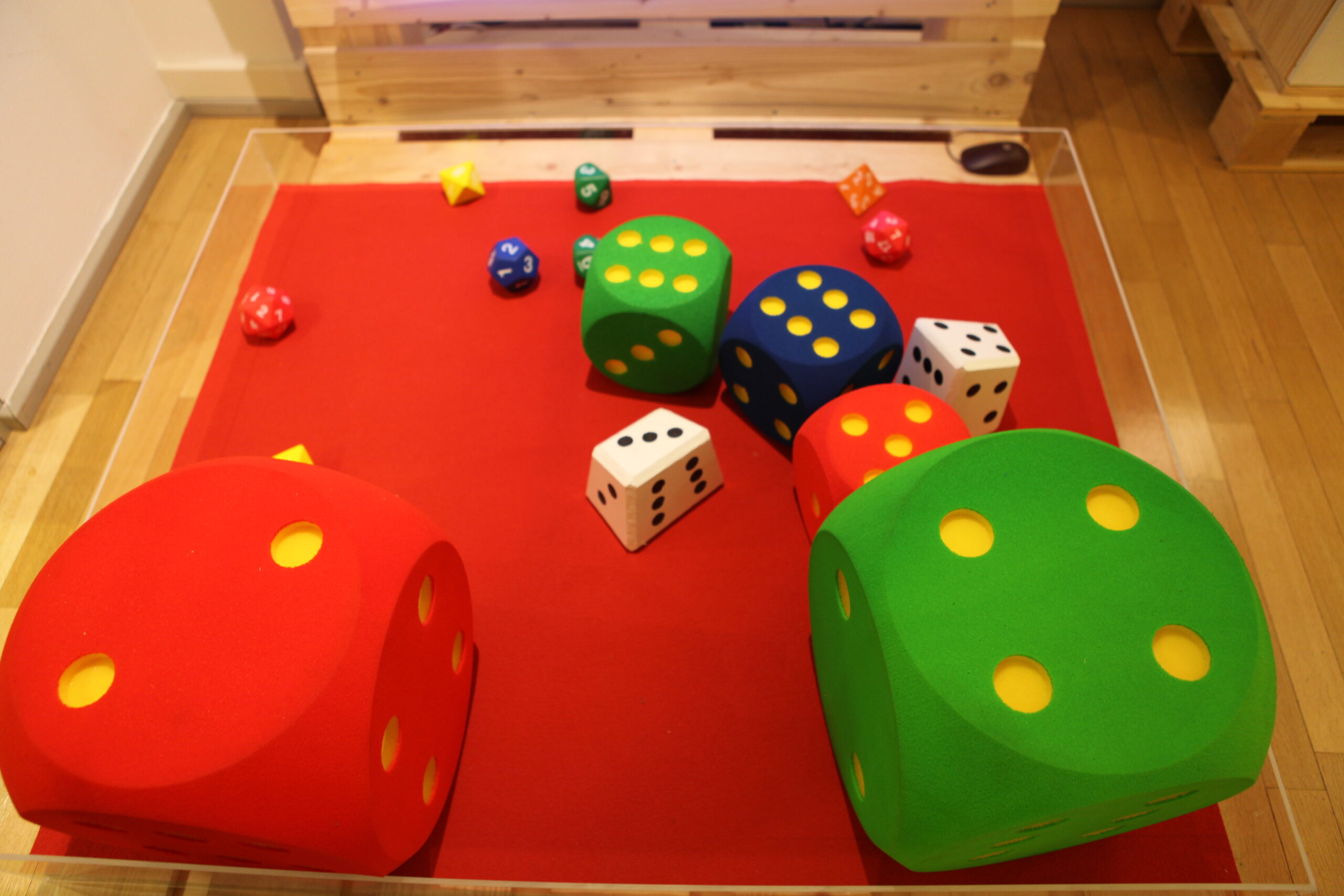
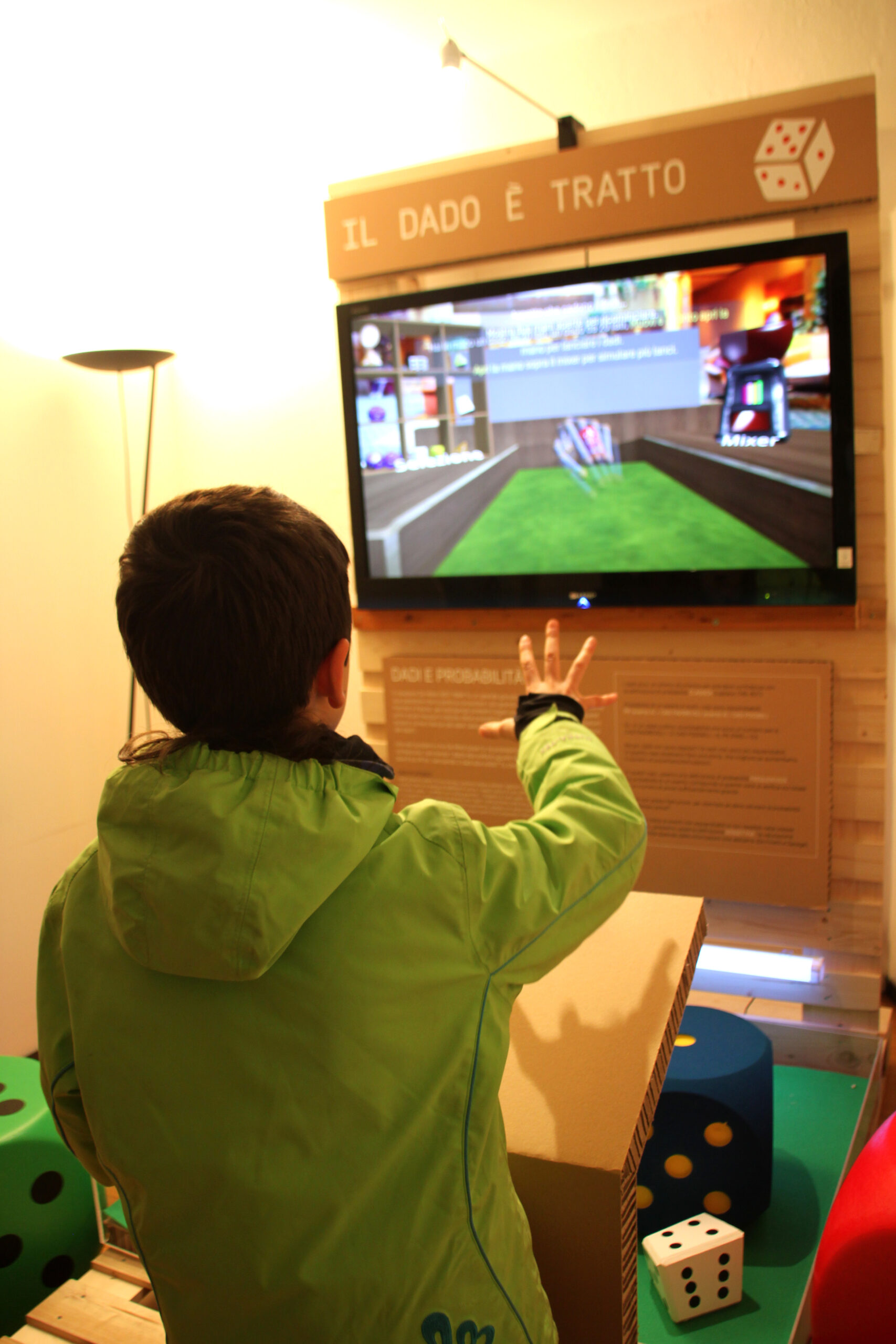
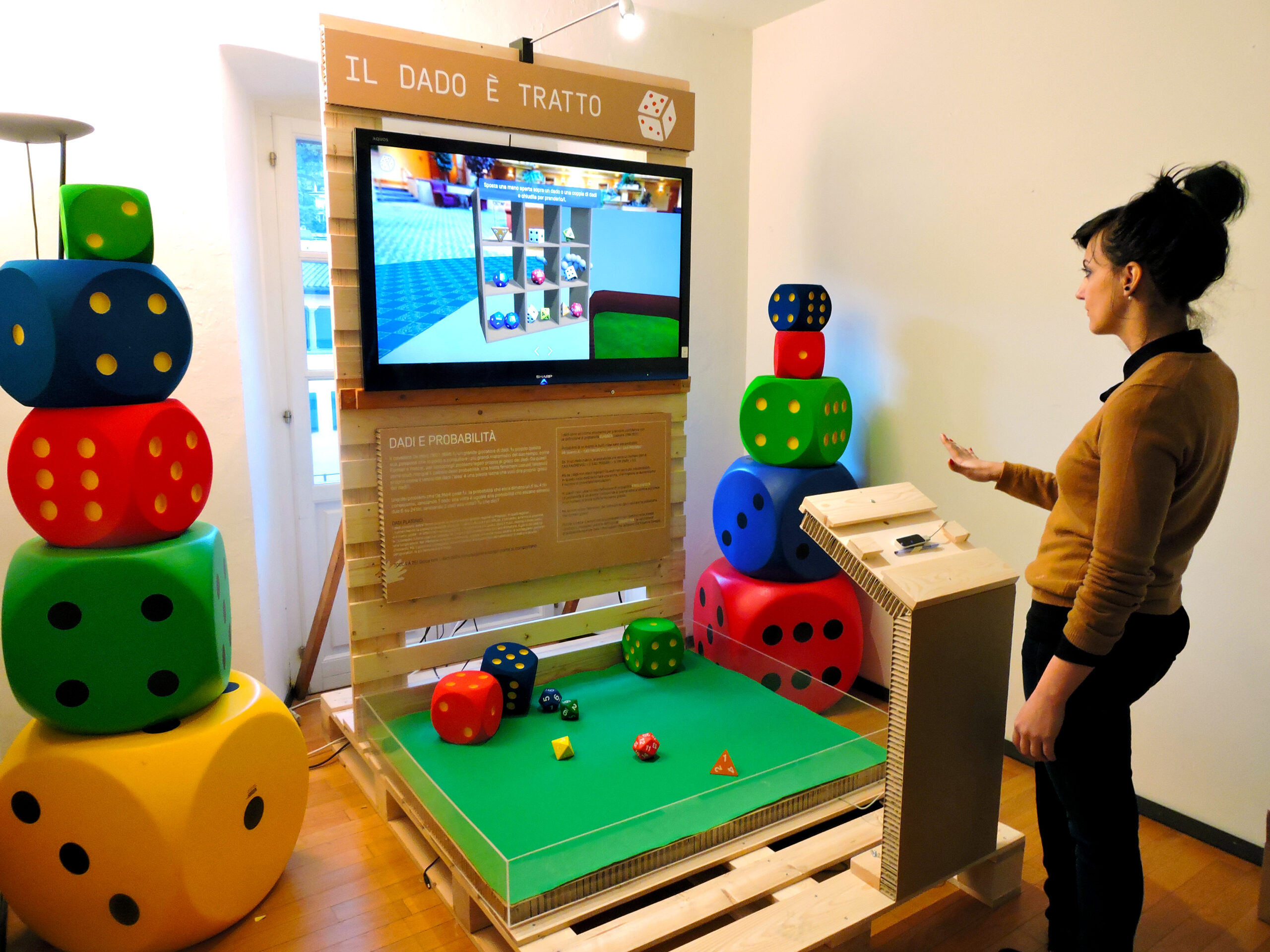
In the original version of the exhibition, a sensor was used to interact with the simulation projected on the TV. In the version presented in this repository, we use an updated simulation, which can be accessed via the link provided and viewed with a simple browser, while interaction is possible via a simple keyboard or mouse.
The simulation makes it possible to verify through a simple selection what happens after a very large number of throws, both in the case of regular and irregular dice.
Dice are an excellent tool for becoming familiar with the definition of classical probability proposed by Laplace (1749-1827).
We assume that all cases are equiprobable. To calculate the probability of an event A:
Pr (event A)=favourable cases (upon occurrence of event A)/possible cases
E.g. In a cubic die, the probability of an even number coming up is: favourable cases = 3; possible cases = 6;
Pr(pari) = 3/6 = 0.5 = 50%
But what if the dice were not regular? The outcomes would no longer be equiprobable and we could therefore no longer use the previous definition. We could, however, adopt the definition of frequentist probability according to which the probability of an event corresponds to how many times this event occurs out of the total number of trials – realised under the same conditions – sufficiently large as the number of trials tends to infinity. We then repeat the roll of an irregular die many times – say one hundred – and count how many times we get a certain number as a result – for example the number 3. If the number 3 appears 70 times then we can estimate that the probability of outcome three is 70%. Our estimate will be all the more accurate the more times it is repeated. But be careful, the throws of the dice must all be made under the same conditions.
What if I cannot do repeated tests under similar conditions, for example, if I want to assess the probability that it will rain tomorrow? Since it is a matter of assessing the probability of a non-repeatable event under the same conditions, we can use the subjective definition of probability: an individual’s assessment of the probability of an event depends on the degree of confidence he or she has that the event will occur based on the information he or she has available [De Finetti (1906-1985) and Savage (1917-1971)].
For the animation of the exhibit, it is recommended to start with live throws of regular dice and then speculate on what might happen by increasing the number of throws and only then go into simulation.
Very effective is to make hypothesis on irregular dice throws (skew says), in this case it is difficult to find already made ones, below is a link to a site where you can buy them.
SKY DICE (Where to buy) // option A
SKY DICE (Where to buy) // option B
Curiosity: Chevalier De Méré (1607-1684) was a great dice player and it was his passion that led him to consult the greatest mathematicians of his time, such as P. de Fermat and B. Pascal, to submit to them problems related to the game of dice. From these early studies, the calculus of probability was born, which deals with random phenomena, i.e. aleatory phenomena just like the throwing of dice – ‘alea’ is a Latin word meaning dice game.
A SKEW DIE is a non-uniform die. Other than a coin flip, the most common probability example in introductory classes is based on a fair, uniform 6-sided die, where we assume that all sides are uniformly equal in probability.
The fundamentals of probability still hold if the assumption of uniformity is violated. Skewed dice were designed (by the author) to illustrate how pervasive the uniformity assumption is. These dice have been rolled a few hundred times to determine experimentally the probabilities of each number coming up.
Further exploration of skewed dice can be found here.
What is gambling?
People bet, usually money or goods, on the outcome of a future event. The bet, once placed, cannot be withdrawn. The outcome of the bet is governed by chance. The skill of the player does not count.
In Italy, the oldest lottery dates back to the 16th century and still bears the same name: Lotto. In Genoa, for the first time in Italy, the game of Lotto was legalized in 1576, following a long unrecognized tradition of betting on many events (outcomes of Doges’ elections, marriages, sex of the unborn).
In Italy Betting on horse racing became a popular game of chance with the birth of Totip in 1948.
In Britain in the 12th and 13th centuries, betting on horse racing, now among the most popular forms of gambling, was called “the sport of kings.” But in 1661, the first law banning gambling was enacted, with the aim of preventing less well-off people from getting into debt.
In France the philosopher Blaise Pascal in the 16th century was the inventor of roulette.
In California in 1885 ‘American Charles Fay built the first SlotMachines.
(Source: Arnold P The Enrucionedio of Gomblino Chartwell Books 1977).
Roger Caillois (1913 – 1978) French writer, sociologist, anthropologist and literary critic wrote the best-known Classification of GAME (1962) in which the following definition appears: “ALEA games whose outcome can be determined solely by chance, as in the case of a coin toss, in betting, roulette, lottery… In these kinds of games: player skill is often irrelevant, chance is dominant, risk is always present.”
Rolling of the dice simulation game
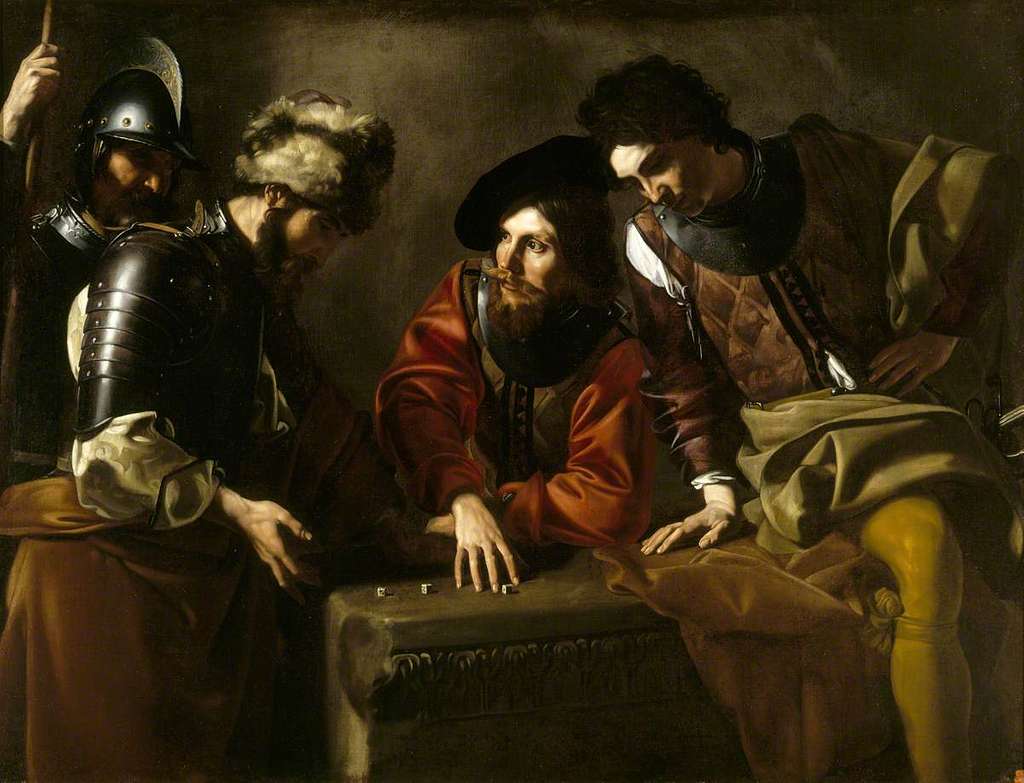
How to build
EXHIBIT MATERIAL DIN VERSION
- n.1 base pallet 120×180 cm // on which rests plan launch nuts in honeycomb cardboard
- n.1 vertical pallet 120×200 cm with holes for TV screws n.1 cardboard/wooden base 120×100 cm with carpet and plexiglass sides
- Plexiglass sides per floor (120×100 cm)
- Skew/irregular and regular dice
- Printed cardboard panel 100×50 cm with explanation
- Title cardboard panel 120×20 cm
- PC for simulation
- Sensor // or alternative solution with PC or tablet to interact with simulation.
- MDF and cardboard stand (90×35 cm) for TABLET or keyboard // for interactive simulation on the TV.
DOWNLOAD PRINT-READY .PDF FILES & LINK:
- CARDBOARD PANEL (FRA)
- CARDBOARD PANEL (ITA)
- 3D MODEL SKEW DIE // 1
- 3D MODEL SKEW DIE // 2
- PLATONIC DICE AND SOFT DICE (30 CM SIDE) // 1
- PLATONIC DICE AND SOFT DICE (30 CM SIDE) // 2
